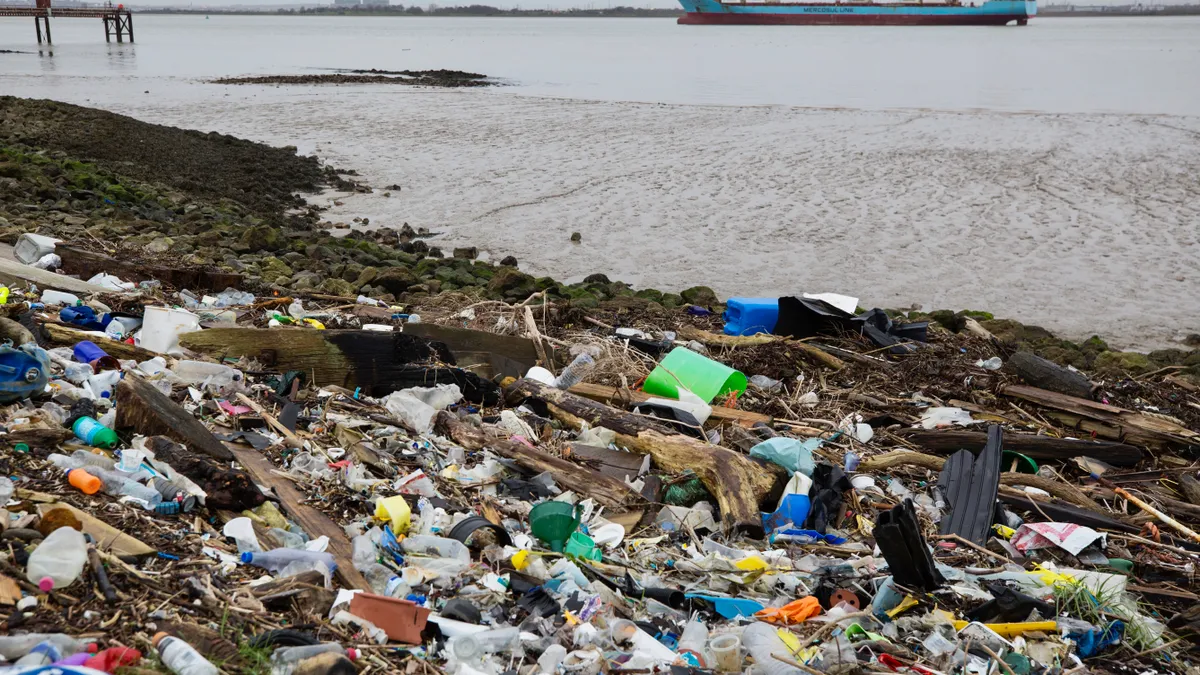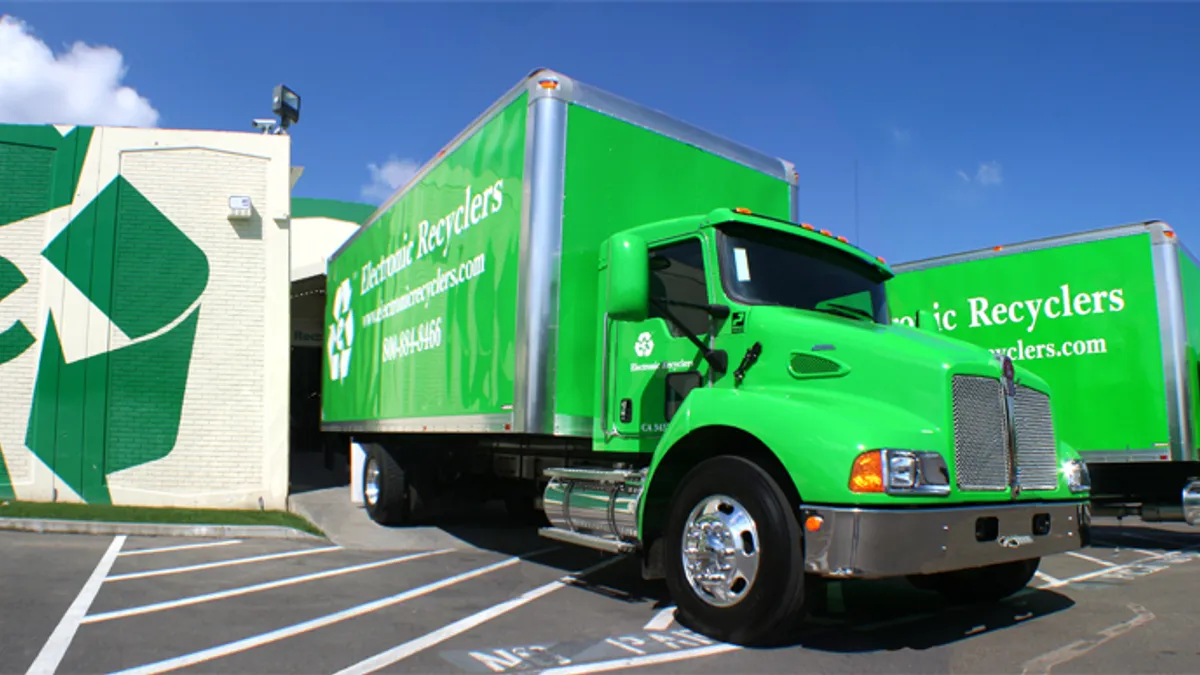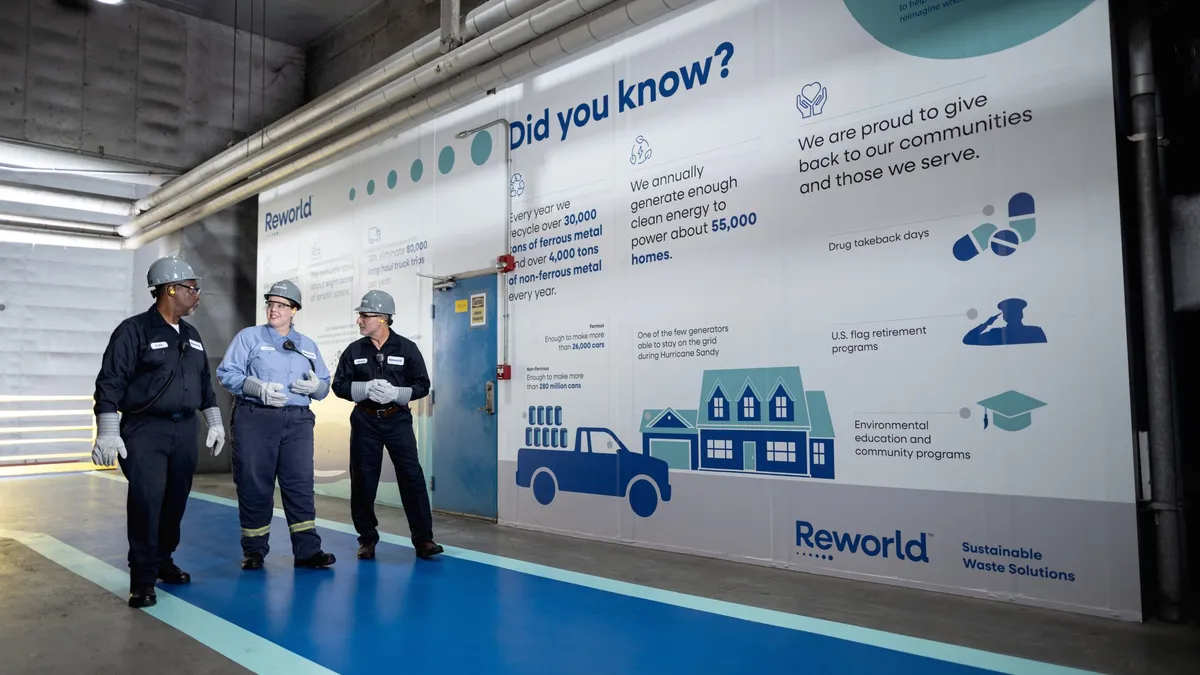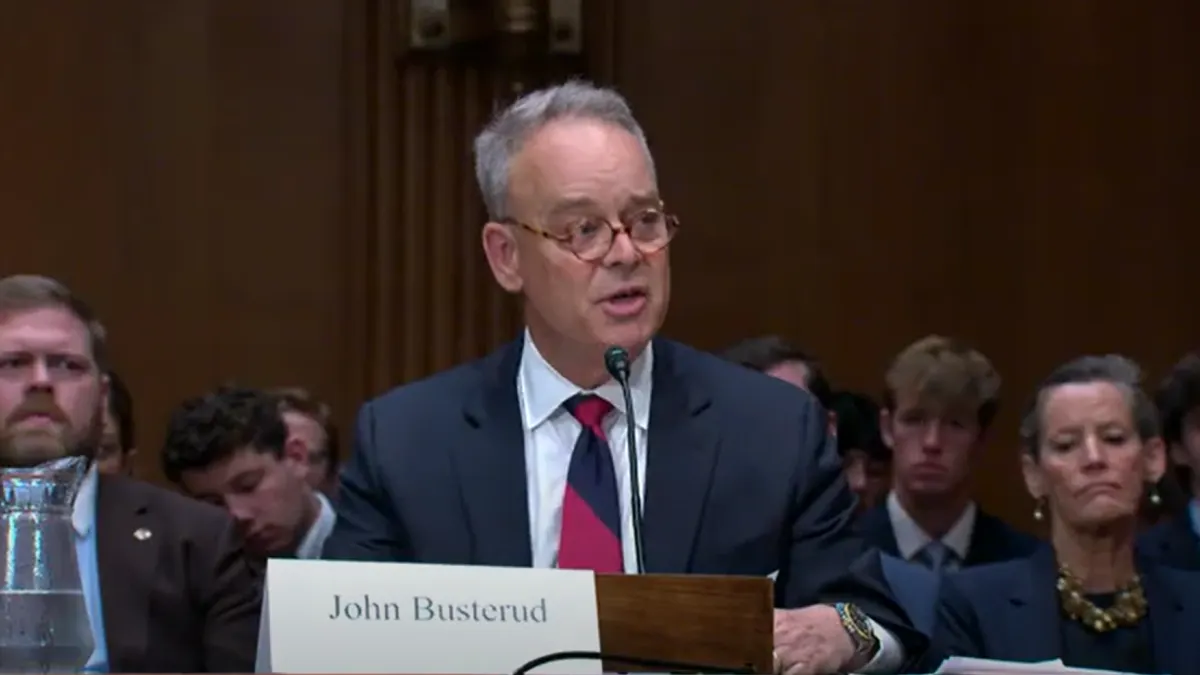The United Nations Environment Assembly has agreed to start work on an international, legally binding treaty to tackle global plastic waste. UNEA’s resolution, released Wednesday, sets the goal to present a detailed treaty by the end of 2024. A negotiating committee will begin hammering out the details this year.
Supporters said a major strength of the resolution is the acknowledgment that the most effective way to manage and eliminate plastic pollution is to take the full plastics life cycle into account. Because treaty language is expected to include more detailed requirements or regulations across the whole value chain, waste and recycling industry stakeholders anticipate it will eventually affect big-picture operations and plastics management practices.
“We just don’t know how yet,” said Joe Pickard, chief economist and director of commodities for the Institute of Scrap Recycling Industries.
Though details of the final treaty won’t be known for two years, these stakeholders say they will monitor discussions for clues that treaty language could further regulate international trade in plastics, set standards or goals for recycling or minimum recycled content rates, ban certain types of single-use plastics, or require data and reporting elements.
Despite lingering questions, many environmental groups and waste and recycling industry professionals see the plastics treaty decision as a major driver of future waste regulations meant to change the landscape of how plastic products are made and managed — and who will be on the hook for managing them. That’s because the global resolution targets plastic’s entire life cycle instead of just some facets of its production or disposal, said Jenna Jambeck, an environmental engineering professor at the University of Georgia and an author of leading studies on ocean plastic.
“This goal is broader than just recycling. It means upstream changes before recycling so that it would take into account the design of products and materials for circular management at the end of their cycle,” Jambeck said.
The resolution acknowledges circular economy facets, starting with product design and including reuse and recycling strategies and overall plastics reduction efforts. Groups like the National Waste and Recycling Association and ISRI pointed out that the resolution’s specific call-outs to sustainable product design emphasize design for recycling and reuse. Supporters say it’s an encouraging detail for the recycling and waste industries, which sometimes feel saddled with managing packaging that is not recyclable, recyclable only in limited markets or too low in value to make it worth the processing costs.
Another notable mention in the resolution, according to environmental groups such as the World Wildlife Fund, GAIA, the Break Free From Plastic Coalition and Greenpeace, is the call to reduce virgin plastics manufacturing and consumption as a major way to reduce pollution.
A recent report from the Organization for Economic Cooperation and Development (OECD) says plastic consumption has quadrupled in the past 30 years, driven mainly by market growth. In the years between 2000 and 2019, global plastic waste generation more than doubled, to 353 million metric tons
A UNEA report points out the negative health effects and greenhouse gas emissions associated with plastic pollution and says the world can reduce virgin plastic production by 55% and reduce the volume of plastics entering the ocean by about 80% by 2040 by moving toward a circular economy.
Many stakeholders said they hope to be part of the UNEA’s discussions to shape a resolution that will eliminate plastic litter long term while also working within the realities and complications of how plastic is collected, recycled, traded or sent to landfills.
“Right now, the resolution is pretty broad in terms of its goals and plans for implementation, and there’s still a lot that will need to be worked out between the parties,” Pickard said.
Brandon Wright, NWRA’s vice president of communications, said the organization’s members are still looking over the resolution’s details, but the group broadly supports the resolution’s plastic management and reduction mentions.
As more treaty details emerge, “we want to follow how the conversations around how collection systems will fit into this larger effort to intercept waste so that it doesn’t get into waterways,” he said. “We’re also going to be watching the conversations around managing plastic and minimum recycled content requirements, as well as reduction in virgin plastic consumption.”
NWRA will also be watching for implementation timelines that can give the relevant waste and recycling industries some time to adjust. “We’re hopeful that, with this treaty, there will be some short-term, mid-term and long-term targets,” he said.
Future discussions should also focus on how to improve recycling around the world, particularly in nations with less formal infrastructure, added David Biderman, executive director and CEO of the Solid Waste Association of North America.
“It won’t be sufficient to ratify a treaty on plastic if there are not modern disposal and recycling facilities available to manage discarded materials,” he said in an email.
Another factor the industry will need to consider is how the treaty could be enforced, particularly if it ends up requiring data and reporting on subjects including diversion, recycling or recycled content rates, Jambeck added. “The right framework is here, but both assessing the effectiveness and progress will require standardized data collection and monitoring, which is not currently happening consistently yet,” she said.
Though the resolution doesn’t specifically mention trade or markets for plastics, Pickard said ISRI will be monitoring treaty language that could affect recyclers’ ability to sell or trade certain plastic commodities. “We’ll be watching for additional movement on trade issues and differentiation between what would be voluntary requirements versus mandatory requirements under the new agreement,” he said.
The resolution does briefly mention the Basel Convention, an international agreement that aims to ensure certain wastes are handled responsibly. The United States is one of just a few countries in the world that are not a party to the agreement, and states such as California have urged the Biden administration to ratify it. ISRI has expressed concerns about some of the provisions of the Basel Convention, saying its designation of some plastic scrap as waste instead of a tradable commodity negatively impacts trade. “It’s something we’d watch to see how it factors into the future treaty,” Pickard said.
Meanwhile, the Biden administration backs the plastics treaty, in contrast with the Trump administration. The State Department recently highlighted existing U.S. efforts to fight plastic pollution through key programs such as the National Recycling Strategy, plastics innovation and research projects, and partnerships with other countries.
Stakeholders also anticipate that some of the more intricate details of the treaty may come from the resolution’s recognition that each nation will likely have different approaches to meeting the plastic treaty goals.
“The resolution allows for the flexibility for the future treaty to be applied in the national context of each member state — recognizing that there are differences between them and what actions might make sense,” Jambeck said.
Some UNEA delegates envisioned the treaty would be modeled on the Paris climate accord of 2015, where countries are responsible for meeting required climate change targets, but each nation decides which strategies work best for their individual governments.
The International Council of Chemical Associations, of which the American Chemistry Council is a member, applauded the resolution for providing “governments with the flexibility to identify binding and voluntary measures across the full lifecycle of plastics, while recognizing there is no single approach to solving this global challenge,” it said. Matthew Kastner, ACC’s director of media relations for the plastics division, did not respond directly to a request for comment Wednesday, instead referring to the ICCA statement.
ACC has said in past weeks that it supports a treaty to curb plastic pollution, specifically one with “binding and nonbinding” agreements. However, ACC has also said it does not believe in enacting “globally mandated controls” on plastic production or consumption, preferring any global agreements to include ways for countries to adopt regulations that fit best for them.
Dozens of brand owners have also weighed in on the treaty. Unilever was among those that expressed support and acknowledged the role major brands must play to reduce plastic waste in a joint release. The brand touted its participation in voluntary industry commitments such as the Ellen MacArthur Foundation’s Plastics Pact, which it and other brands say aligns with the UNEA resolution’s principles. However, some environmentalists think brands could do more to reduce their plastic consumption and use.
Inger Andersen, the executive director of UNEP, said in a news release that the two-year time period for hammering out treaty language “does not grant any stakeholder a two-year pause,” stressing that businesses and governments should start work now to “shift away from single-use plastics” and remove barriers to investments in the circular economy.
This developing story has been updated with additional comment from SWANA.



















